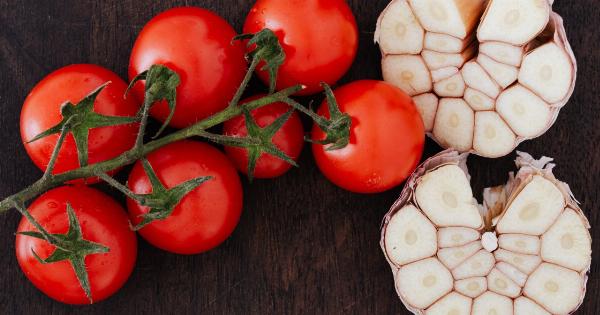Capsaicin is a compound found in many spicy foods, particularly chili peppers. It is responsible for the spicy sensation that we experience when consuming these foods. However, capsaicin offers much more than just a fiery taste.
It has been found to have numerous health benefits, including potential weight loss properties.
How Does Capsaicin Aid Weight Loss?
Capsaicin has been shown to boost metabolism and increase fat burning. It achieves this by raising the body’s core temperature, a process known as thermogenesis.
When the body is in a thermogenic state, it requires more energy to function, thereby burning more calories. This increase in calorie expenditure can contribute to weight loss over time.
Furthermore, capsaicin has also been found to suppress appetite. Studies have shown that consuming capsaicin can lead to a decrease in appetite and a feeling of fullness, which can ultimately result in reduced calorie intake.
By curbing cravings and promoting satiety, capsaicin can assist individuals in achieving and maintaining a calorie deficit, a crucial factor in weight loss.
Where to Find Capsaicin?
If you’re looking to incorporate capsaicin into your diet for weight loss, it’s important to know where you can find it. Capsaicin is most abundant in chili peppers, particularly in the seeds and the white membrane surrounding them.
However, the exact concentration of capsaicin can vary depending on the specific pepper variety.
Hot Peppers
When it comes to capsaicin content, the heat of a pepper is often an indicator. The higher the heat level, the greater the amount of capsaicin present.
Some of the hottest pepper varieties, such as the Carolina Reaper and the Trinidad Moruga Scorpion, contain exceptionally high concentrations of capsaicin. However, these peppers are extremely spicy and may not be suitable for everyone’s palate.
Slightly milder options like the habanero, jalapeno, and serrano peppers still pack a decent amount of capsaicin. These peppers can be found in most grocery stores and are widely used in various cuisines.
Cayenne Pepper
Cayenne pepper is another popular source of capsaicin. It is often used as a spice and is frequently utilized in supplements and weight loss products.
Cayenne pepper powder or crushed cayenne pepper can easily be added to dishes, sauces, and even beverages. Just a small amount of cayenne pepper can provide a significant dose of capsaicin.
Hot Sauces and Spicy Foods
If you enjoy hot and spicy foods, incorporating hot sauces into your meals can be a simple way to add capsaicin to your diet. Many hot sauces are made using chili peppers and therefore contain capsaicin.
Just be mindful of the sodium and calorie content of some hot sauces, as excessive intake may not align with your weight loss goals.
In addition to hot sauces, other spicy foods such as curry dishes, kimchi, and salsa often contain capsaicin. These flavorful options can provide both taste and the potential weight loss benefits of capsaicin.
Capsaicin Supplements
If you’re not a fan of spicy foods or simply want a more convenient way to consume capsaicin, supplements are available.
Capsaicin supplements typically come in capsule or liquid form, allowing you to easily incorporate them into your daily routine. However, it’s essential to choose high-quality supplements from reputable brands to ensure purity and effectiveness.
Recipes and Tips for Using Capsaicin-Rich Foods
Now that you know where to find capsaicin, it’s time to explore some delicious recipes and tips for incorporating these spicy foods into your diet:.
1. Spicy Stir-Fry: Create a vibrant stir-fry with your choice of protein and plenty of colorful vegetables. Add sliced chili peppers to the mix for an extra kick.
2. Spicy Guacamole: Spice up your guacamole by adding some finely chopped chili peppers or a dash of cayenne pepper.
3. Chili Pepper Salsa: Make a zesty salsa by combining diced tomatoes, red onions, cilantro, lime juice, and minced chili peppers.
4. Stuffed Peppers: Fill bell peppers with a mixture of lean ground meat, quinoa, and diced chili peppers. Bake until tender and enjoy a flavorful meal.
5. Capsaicin-Infused Beverages: Add a pinch of cayenne pepper or a few drops of liquid capsaicin extract to your favorite smoothies, teas, or even lemon water for a metabolism-boosting twist.
Potential Side Effects and Precautions
While capsaicin can offer significant benefits, it’s important to be aware of potential side effects and take necessary precautions:.
1. Digestive Discomfort: Some individuals may experience gastrointestinal discomfort, including stomach pain, heartburn, or diarrhea, when consuming capsaicin.
If you have a sensitive stomach or a history of gastrointestinal issues, start with small amounts and gradually increase your intake.
2. Skin and Eye Irritation: Direct contact with capsaicin can cause skin and eye irritation. When handling chili peppers or capsaicin-based products, it’s advisable to wear gloves and avoid touching your face or eyes.
3. Drug Interactions: Capsaicin may interact with certain medications, particularly those used to treat high blood pressure or blood clotting disorders. Consult with your healthcare provider if you have any concerns or are taking medications.
4. Allergies: Although rare, some individuals may be allergic to capsaicin. If you experience any allergic reactions, such as hives, swelling, or difficulty breathing, seek medical attention immediately.
Conclusion
Capsaicin is a powerful compound found in spicy foods that can potentially aid weight loss efforts.
By boosting metabolism, suppressing appetite, and promoting a feeling of fullness, capsaicin can contribute to creating a calorie deficit and achieving weight loss goals. Whether you prefer hot peppers, cayenne pepper, sauces, or supplements, there are numerous ways to incorporate capsaicin into your diet. Remember to start with small amounts and be mindful of potential side effects.
With its unique properties, capsaicin can add both flavor and potential weight loss benefits to your meals.


























